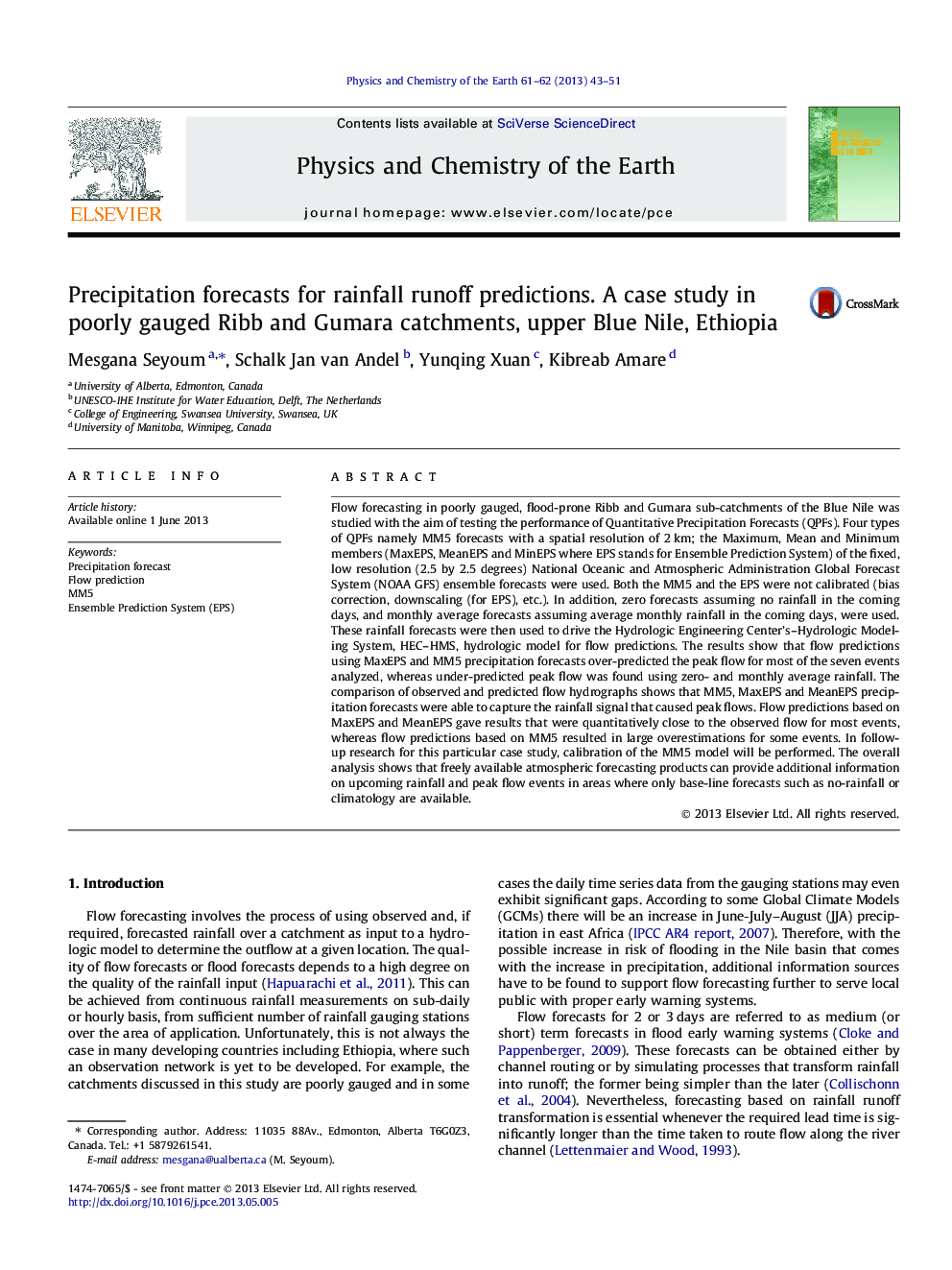| کد مقاله | کد نشریه | سال انتشار | مقاله انگلیسی | نسخه تمام متن |
|---|---|---|---|---|
| 4720999 | 1639361 | 2013 | 9 صفحه PDF | دانلود رایگان |

• Quantitative precipitation forecasts were used in flow forecasting of two catchments.
• QPF flow forecasts performed better than those using monthly mean rainfall.
• In poorly gauged catchments using QPFs is helpful to indicate upcoming floods.
• Freely available atmospheric products can provide information for peak flow events.
Flow forecasting in poorly gauged, flood-prone Ribb and Gumara sub-catchments of the Blue Nile was studied with the aim of testing the performance of Quantitative Precipitation Forecasts (QPFs). Four types of QPFs namely MM5 forecasts with a spatial resolution of 2 km; the Maximum, Mean and Minimum members (MaxEPS, MeanEPS and MinEPS where EPS stands for Ensemble Prediction System) of the fixed, low resolution (2.5 by 2.5 degrees) National Oceanic and Atmospheric Administration Global Forecast System (NOAA GFS) ensemble forecasts were used. Both the MM5 and the EPS were not calibrated (bias correction, downscaling (for EPS), etc.). In addition, zero forecasts assuming no rainfall in the coming days, and monthly average forecasts assuming average monthly rainfall in the coming days, were used. These rainfall forecasts were then used to drive the Hydrologic Engineering Center’s–Hydrologic Modeling System, HEC–HMS, hydrologic model for flow predictions. The results show that flow predictions using MaxEPS and MM5 precipitation forecasts over-predicted the peak flow for most of the seven events analyzed, whereas under-predicted peak flow was found using zero- and monthly average rainfall. The comparison of observed and predicted flow hydrographs shows that MM5, MaxEPS and MeanEPS precipitation forecasts were able to capture the rainfall signal that caused peak flows. Flow predictions based on MaxEPS and MeanEPS gave results that were quantitatively close to the observed flow for most events, whereas flow predictions based on MM5 resulted in large overestimations for some events. In follow-up research for this particular case study, calibration of the MM5 model will be performed. The overall analysis shows that freely available atmospheric forecasting products can provide additional information on upcoming rainfall and peak flow events in areas where only base-line forecasts such as no-rainfall or climatology are available.
Journal: Physics and Chemistry of the Earth, Parts A/B/C - Volumes 61–62, 2013, Pages 43–51